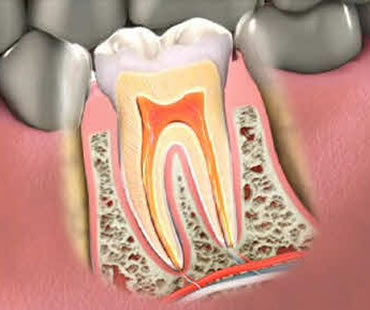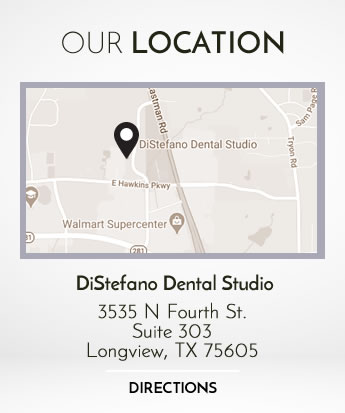
People are talking about dental implants. They’re talking about what a secure, longterm solution they are for patients with missing teeth and how successful they are for dental patients of all types. Are you wondering if you’re a candidate for dental implant treatment? The answer is yes, you probably are!
The one factor that’s a must for being a dental implant candidate is that you must have a missing tooth. The AAOMS (American Association of Oral and Maxillofacial Surgeons) estimates that as many as 70% of all adults have lost a minimum of one adult tooth. If you are among this group and you have a missing tooth, you’re a candidate for dental implants. Some patients are better suited to this particular treatment, however, so making an informed decision regarding your particular tooth replacement is vital.
The healthier you are, the more successful your dental implant surgery will be. Some health conditions and diseases should be strongly factored into whether or not dental implants are the best tooth replacement option. Patients with the following conditions may experience difficulty in the fusing of implant and bone:
- Smoking
- Cancer
- Radiation to the jaws or face
- Diabetes
- Drug or alcohol dependency
- Acute gum disease/periodontitis
Typically, a tooth is lost due to an accident, tooth decay, advanced gum disease or a failed root canal treatment. Even though the cause of the tooth’s loss might be through poor oral health, the healthier your mouth and surrounding teeth are, the more successful a dental implant will be.
Because the health of the bone is directly related to the strength of the fusion of the bone to implant, patients with healthier bones will have more successful experiences with dental implants. Maintain a diet high in calcium and other bone-nourishing nutrients and drink plenty of fluids.
We look forward to seeing you in our Longview dental office

The goal of root canal therapy is to relieve pain, not cause it. The pain you experience before a root canal is the result of damage to the tissues in the tooth. Root canal therapy removes that damaged tissue, therefore relieving the discomfort you feel. If you are still experiencing tooth pain after undergoing a root canal procedure, it could be an indication of a problem with the treatment.
While mild discomfort is to be expected during the root canal healing process, if the pain continues or becomes more severe, it is likely an indication of a problem. There are several reasons for tooth pain after root canal treatment:
- The tooth has an extra canal that was not cleaned and filled, meaning there is an extra physical root.
- The tooth has a small, tight accessory canal that is difficult to locate on x-rays or hard to access with the necessary tools.
- The tooth is fractured due to the damage and weakened state caused by the original decay and the access cavity that is created to begin the root canal treatment.
- The root canal has become reinfected.
- The small files used by your dentist to clean out the pulp of the tooth sometimes break, resulting in a failed root canal treatment.
In the days immediately following root canal therapy, it is normal to experience some tenderness of the tooth or surrounding gum. This discomfort should be easily managed with over-the-counter painkillers and should subside in a few days. If the pain does not ease in a few days or becomes more severe, contact your dental professional immediately to access your symptoms and determine if you are having root canal complications.
Our dental office is located in Longview

An endodontist is a dentist who has undergone additional training specializing in saving teeth through treatments that involve the pulp and root of teeth. If you have been diagnosed by your family dentist with an infected tooth that requires root canal therapy, it would be logical to seek treatment by a dental professional who is specifically trained in root canal procedures. To find a qualified endodontist for your root canal treatment, consider the following:
- Ask for a referral from your family dentist to an accredited diplomate of the American Board of Endodontics. You may also consider asking friends and family members who have undergone root canal therapy for recommendations of endodontists.
- Inquire about the extent of the endodontist’s education and training as well as the number of root canal procedures they have performed. You will want to look for a doctor with an established practice and extensive track record of root canal experience.
- Find out what type of equipment the doctor utilizes to ensure they are up-to-date on the most recent advances in endodontic therapy and dental technology.
- Ask about the sedation and pain-relief options the endodontist provides for root canal patients.
- Evaluate the endodontist and staff to determine if they make you feel comfortable, welcome, and are able and available to answer your questions.
Root canal treatment can be a stress-free and painless experience when performed by the right dental professional. Taking the time and effort to identify a qualified endodontist will help to ensure the ease and success of your procedure, and soon have you back on the road to a healthy smile.
Root canal dentist in Longview

Many patients seeking the stability and durability of dental implants wonder what the difference is between mini implants or standard sized dental implants. The basic differences are with regard to their intended function.
A standard dental implant is larger than 3 millimeters in diameter and is made up of two parts: the screw and the abutment. The screw portion of a dental implant is made of titanium, a non-toxic metal well tolerated by the body. The success of all dental implants is due to this bio-compatibility. Materials that aren’t tolerated by the body can create a response by the immune system and may lead to serious problems over time.
With a standard implant, the screw has two threaded areas: external, to screw into the bone and internal, to accommodate any components that are screwed into the implant for security. This internal area provides for the abutment. It is on this abutment that the tooth portion of a dental implant is attached. It also holds dentures firmly in place.
A mini dental implant is smaller than 3 millimeters in diameter and has one solid piece instead of screw and abutment. A mini implant has a solid screw body with a rounded ball shape that extends out of the jawbone. This rounded ball can hold a denture with a corresponding slot, keeping the restoration firmly in place.
Because they are smaller, mini implants provide less support than a standard implant. For example, four mini implants would be needed to hold a patient’s lower dentures in place securely. For the same job, only two standard sized implants would suffice.
Consult your dentist to determine if mini implants or standard implants are right to address your missing tooth or teeth. Get the right implant for your specific needs.
Our dental office is located in Longview

Endodontics is a dental term often linked to a more common dental procedure you’ve probably already heard of called root canal treatment. Endodontics focuses on the pulp of your tooth, which holds nerves and blood vessels supplying nutrients and oxygen to your tooth. When the pulp is infected or injured, endodontic treatment may be performed to save the tooth.
During endodontic treatment, the hollow part inside your tooth is cleaned, disinfected, and filled. It is often the best way to save a tooth that has been damaged by decay, trauma, or other causes. Common symptoms that endodontic treatment is necessary include pain, tooth sensitivity, or exposure of the pulp due to tooth fracture.
After examining your tooth and X-ray results, your dentist will recommend the kind of endodontic treatment you need based on how seriously the pulp is impacted. One type is called vital pulp therapy, which has a goal of preserving and protecting your tooth’s pulp. This procedure involves removing only the pulp from the crown of your tooth and not from the root. It is only advised when there is no swelling or abscess present, and the tooth is secure.
Another type of endodontic treatment is non-vital pulp therapy, which is known as root canal treatment. It is performed when there is no chance of saving the pulp of your tooth. The whole pulp will be removed from inside your tooth, and the canals will be cleaned and filled with a special material. Then a stainless steel crown will be placed on the tooth.
Sometimes endodontic treatment is not recommended, and the tooth needs to be extracted instead. This choice depends on factors such as tooth location, age of the tooth, extent of damage, and the patient’s overall health. Your dentist will be able to advise you on the best treatment for your condition.
Our dental office is located in Longview

Are you getting a smile makeover? Do you have one or more missing teeth? Your cosmetic dentist will definitely want to replace those teeth during your smile makeover in order to prevent future problems. Issues may result from your teeth shifting to fill the empty spaces that can affect the overall shape of your face. One of the best and most desirable options for tooth replacement is dental implants.
Dental implants are the top-of-the-line choice for tooth replacement. They are the most like natural teeth in both form and in function. No one will know by looking at you that your tooth is an implant, and you might not even be able to tell it yourself when you’re eating! A dental implant is so secure, it can feel just like your natural tooth.
There are two main parts to a dental implant: the screw base and the tooth restoration. The screw-like base is typically made of titanium. This gives it incredible strength and longevity. The implant is placed directly into the bones of the jaw where it begins to function as a natural tooth root. Over time, oseointegration will occur and the implant will fuse with the bone. The tooth portion of the implant is created in a lab where dental artists are careful to replicate the surface texture and translucency of your natural teeth.
Dental implants can also be used to anchor dentures. Because they’re so strong, they give the dentures a stability that adhesives and suction can’t ever provide. Denture-wearers will never have to deal with embarrassing slipping or clacking again when dental implants are utilized with their dentures.
Consult your cosmetic dentist to see what role dental implants can play in your smile makeover. Begin enjoying your new smile as soon as possible.
Schedule your appointment at our Longview dental office









